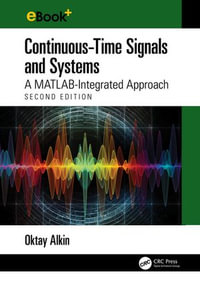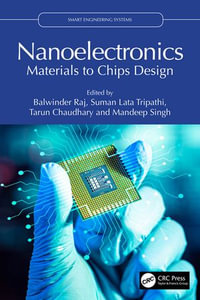
eTEXT
FPGA Implementations of Neural Networks
By: Amos R. Omondi, ?Jagath C. Rajapakse
eText | 4 October 2006 | Edition Number 1
At a Glance
eText
$239.00
or
Instant online reading in your Booktopia eTextbook Library *
Read online on
Desktop
Tablet
Mobile
Not downloadable to your eReader or an app
Why choose an eTextbook?
Instant Access *
Purchase and read your book immediately
Read Aloud
Listen and follow along as Bookshelf reads to you
Study Tools
Built-in study tools like highlights and more
* eTextbooks are not downloadable to your eReader or an app and can be accessed via web browsers only. You must be connected to the internet and have no technical issues with your device or browser that could prevent the eTextbook from operating.
ISBN: 9780387284873
ISBN-10: 0387284877
Published: 4th October 2006
Format: PDF
Language: English
Publisher: Springer Nature
Edition Number: 1
You Can Find This eBook In
Non-FictionComputing & I.T.Computer ScienceComputer Architecture & Logic DesignArtificial IntelligenceExpert Systems & Knowledge-Based SystemsComputer Networking & CommunicationsNeural Networks & Fuzzy SystemsSystems Analysis & DesignEngineering & TechnologyEnergy Technology & EngineeringElectrical Engineering
This product is categorised by
- Non-FictionComputing & I.T.Computer ScienceComputer Architecture & Logic Design
- Non-FictionComputing & I.T.Computer ScienceArtificial IntelligenceExpert Systems & Knowledge-Based Systems
- Non-FictionComputing & I.T.Computer Networking & Communications
- Non-FictionComputing & I.T.Computer ScienceArtificial IntelligenceNeural Networks & Fuzzy Systems
- Non-FictionComputing & I.T.Computer ScienceSystems Analysis & Design
- Non-FictionEngineering & TechnologyEnergy Technology & EngineeringElectrical Engineering
- Non-FictionEngineering & TechnologyElectronics & Communications EngineeringElectronics EngineeringCircuits & Components
- Non-FictionEngineering & TechnologyMechanical Engineering & MaterialsMechanical Engineering
- Non-FictionEngineering & TechnologyTechnology in GeneralTechnical Design
- Non-FictionMathematics























